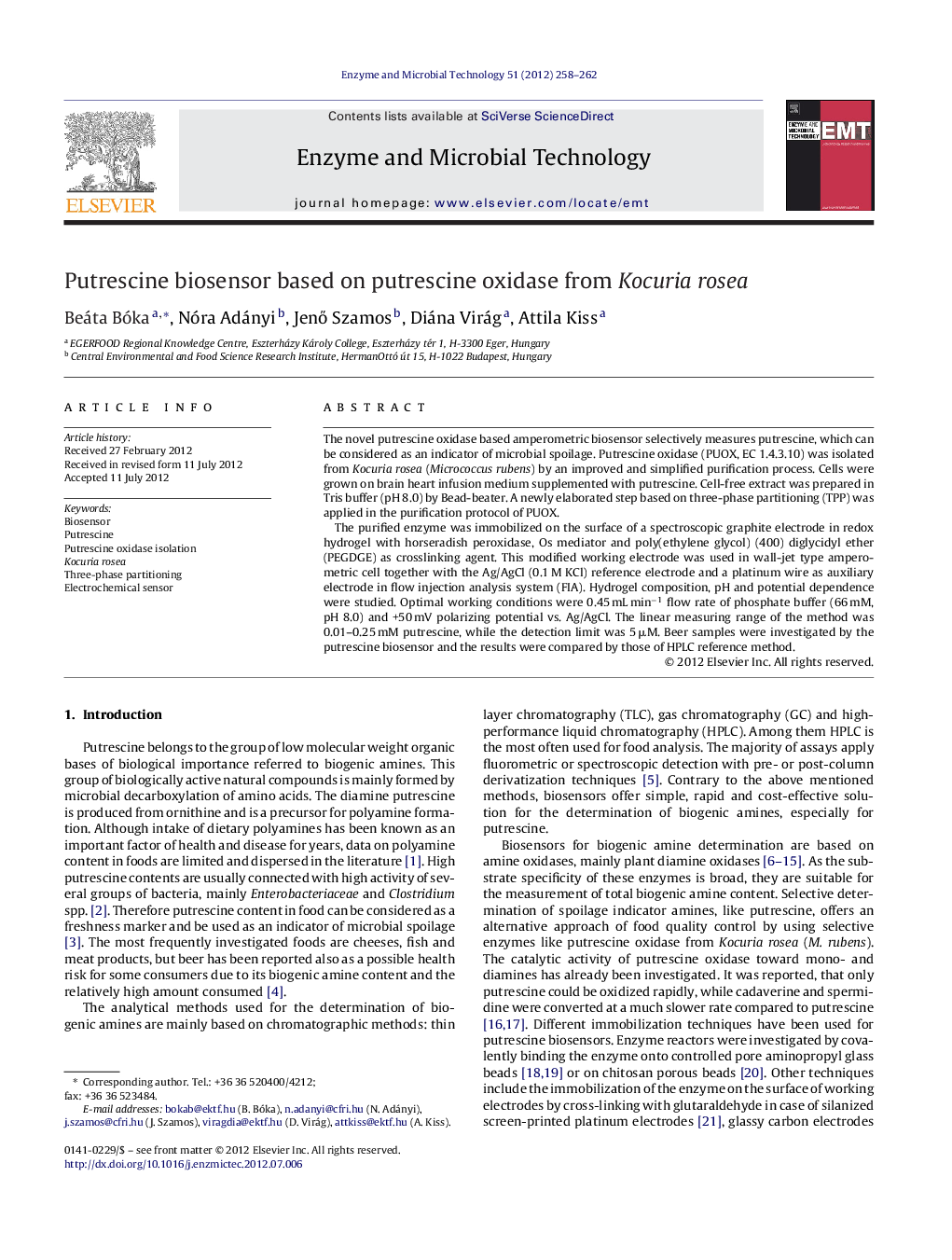| Article ID | Journal | Published Year | Pages | File Type |
|---|---|---|---|---|
| 17214 | Enzyme and Microbial Technology | 2012 | 5 Pages |
The novel putrescine oxidase based amperometric biosensor selectively measures putrescine, which can be considered as an indicator of microbial spoilage. Putrescine oxidase (PUOX, EC 1.4.3.10) was isolated from Kocuria rosea (Micrococcus rubens) by an improved and simplified purification process. Cells were grown on brain heart infusion medium supplemented with putrescine. Cell-free extract was prepared in Tris buffer (pH 8.0) by Bead-beater. A newly elaborated step based on three-phase partitioning (TPP) was applied in the purification protocol of PUOX.The purified enzyme was immobilized on the surface of a spectroscopic graphite electrode in redox hydrogel with horseradish peroxidase, Os mediator and poly(ethylene glycol) (400) diglycidyl ether (PEGDGE) as crosslinking agent. This modified working electrode was used in wall-jet type amperometric cell together with the Ag/AgCl (0.1 M KCl) reference electrode and a platinum wire as auxiliary electrode in flow injection analysis system (FIA). Hydrogel composition, pH and potential dependence were studied. Optimal working conditions were 0.45 mL min−1 flow rate of phosphate buffer (66 mM, pH 8.0) and +50 mV polarizing potential vs. Ag/AgCl. The linear measuring range of the method was 0.01–0.25 mM putrescine, while the detection limit was 5 μM. Beer samples were investigated by the putrescine biosensor and the results were compared by those of HPLC reference method.
► New enzyme purification procedure based on three-phase partitioning. ► Novel biosensor for selective determination of putrescine for food quality control. ► Novel modified electrode based on putrescine oxidase, peroxidase and Os complex. ► Optimized operation of unique enzyme combination. ► The putrescine biosensor was successfully used for the analysis of beer samples.
